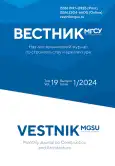Introduction. Construction remains one of the most dangerous economic activities. During construction, workers face various risks that can lead to injuries, including falls from a height, cuts from sharp objects, bruises from falling heavy objects, and others. Fatal injury rates increased by 6.3 % in relation to 2021. In terms of economic component, the construction industry lost 92,373 man-days. The purpose of the work is to analyze the effectiveness and sufficiency of costs aimed at labour protection from 2002 to 2022.Materials and methods. Cost-benefit analysis method is used to estimate the ratio between labour protection costs and the results obtained in reducing occupational injuries in the construction industry. The analysis takes into account the costs associated with implementing labour protection measures and compares them to the outcomes achieved in terms of reducing occupational injuries.Results. In 2022, 33,347,096.1 thousand rubles were spent on labour protection measures. Out of this amount, 59.5 % of all funds, or approximately 33,347,096.1 thousand rubles, were spent for the purchase of protective clothing, special footwear and other personal protective equipment. The remaining funds were directed towards the implementation of other labour protection measures. There has been an annual increase in expenditures on labour protection measures since 2002. However, the real growth of cost is lower, taking into account inflation. The highest inflation was observed in 2002, the lowest in 2017, in 2022 was 11.94 %. In absolute terms, the total inflation over 20 years increased by 185.3 %, while progressive inflation amounted to 407.3 %.Conclusions. The analysis of occupational injury data for the period from 2002 to 2022 did not reveal a trend towards a decrease in industrial accidents from 2020. Some employers do not allocate enough funds for labour protection measures, which leads to a decrease in the level of safety at workplaces. This is confirmed by Rostrud data, which show that in 27.6 % of cases, the cause of injuries is unsatisfactory organization of work. Insufficient financing of labour protection measures is confirmed by the results of inspections. So, technical inspectors in 2022 found more than 4,600 violations. According to these violations, about 1,500 submissions and prescriptions were drawn up. Thus, in 2022, technical inspectors in the whole country recorded more than 4,600 violations of labour protection and 22,500 unfulfilled obligations on the part of the management of enterprises.
 11-25
11-25


 26-35
26-35


 36-44
36-44


 45-53
45-53


 54-66
54-66


 67-76
67-76


 77-83
77-83


 84-93
84-93


 94-104
94-104


 105-114
105-114


 115-127
115-127


 128-137
128-137


 138-147
138-147








